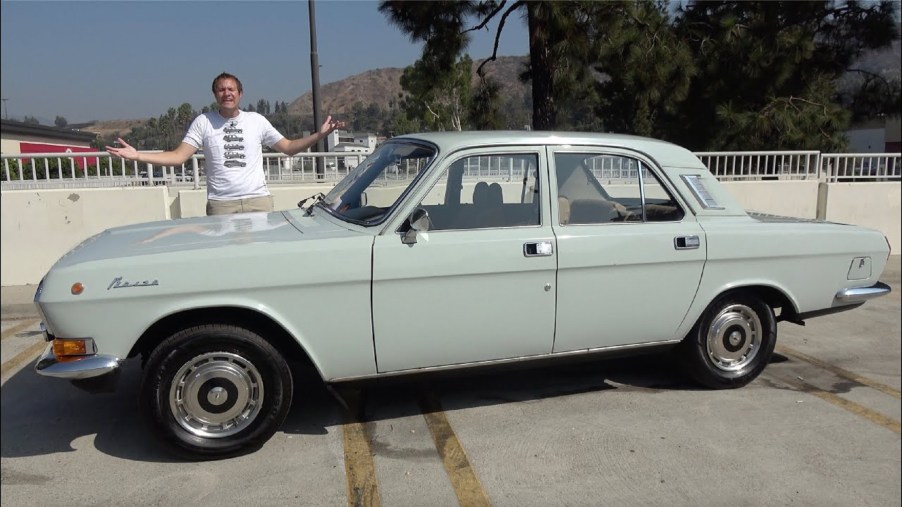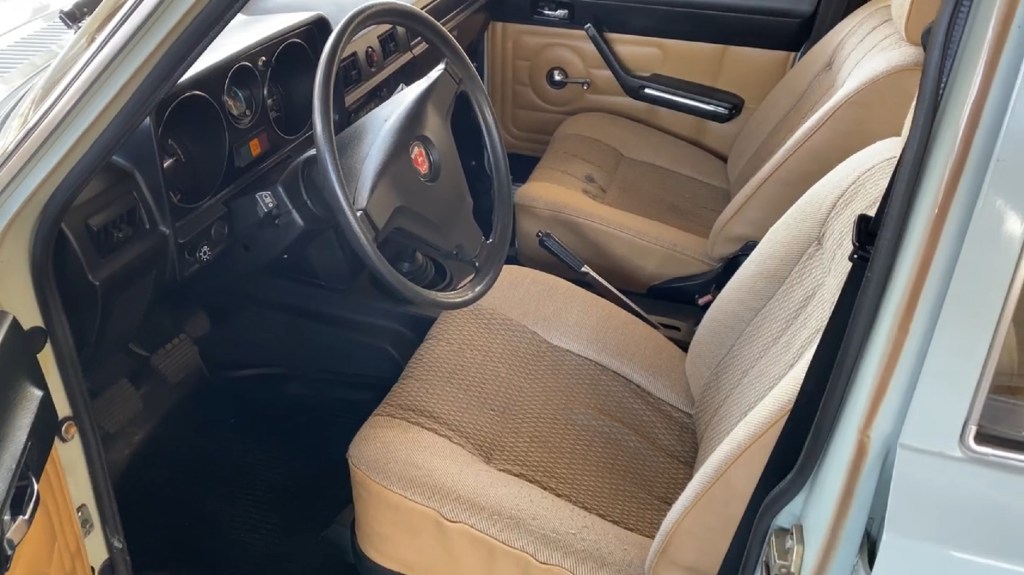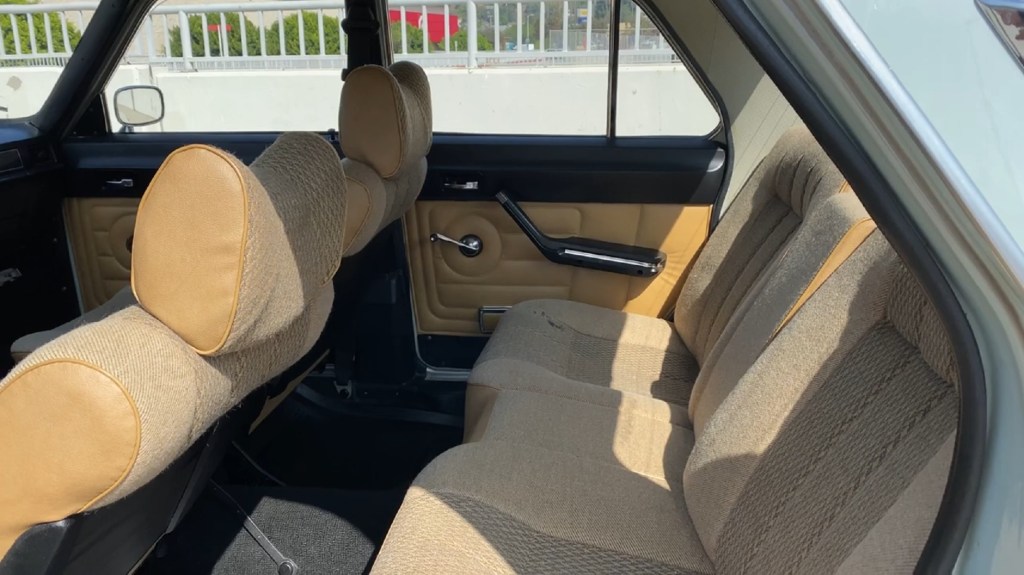
Outdated, Comrade: Doug DeMuro Drives a Soviet Volga GAZ-24-10
Russian vehicles rarely register in the US public consciousness, especially Soviet-era classic ones. Some remember the Yugo, and Tom Hanks helped bolster the Fiat 126p’s status. And apart from the Lada Niva and Ural’s motorcycles, that’s about it. As such, you’ve probably never heard of the subject of Doug DeMuro’s latest video: the Volga GAZ-24-10. But, as you’ll soon discover, there’s a very good reason for that.
The Volga GAZ-24: from Communist Russia luxury to left-behind
The ‘Volga GAZ-24’ name requires some explanation. ‘GAZ’ stands for ‘Gorkovsky Automobilny Zavod,’ which translates to ‘Gorky Automotive Factory,’ Autoweek explains, the Russian carmaker that made it. GAZ made a wide variety of cars, including the Chaika (‘seagull’), a V8-powered Cadillac-esque sedan for high-ranking officials, Petrolicious reports. And it also produced cars under the Volga marque, designed to imitate contemporary American models, Jalopnik explains.
The company introduced the Volga GAZ-24 as a replacement for the earlier GAZ-21, DriveTribe explains. And at the time, it was a decent Soviet executive sedan, Motor1 reports. Though compared to something like the BMW 2002, that’s damning with faint praise.
In standard form, the 1970 Volga GAZ-24 has a 2.5-liter four-cylinder engine and a four-speed manual, Autoweek reports. There were also diesel powertrains available, as well as a limited number of models with the Chaika’s 190-hp 5.5-liter V8 and three-speed automatic. GAZ also made a handful with UAZ-derived 4WD systems, Motor1 reports.
In its day, the Volga GAZ-24 was sort of like a Communist version of the W123 Mercedes E-Class. However, it’s noticeably less luxurious. Standard features include power-assist drum brakes, a foot-operated windshield washer, a heater with defroster, and a rear-window defogger, Motor1 reports. Though the GAZ-24 does also have a power antenna, under-hood lights, and an electric clock.
Despite the sparsity of features, the Volga GAZ-24 was rarely purchased by the Communist public. Instead, most were used as taxis, aided by relatively-high ground clearance and a fairly durable design, DriveTribe reports. But even so, by the mid-80s it was hilariously out of date.
GAZ attempted to rectify this with the Volga GAZ-24-10, Hemmings reports. But, as Doug DeMuro explains, that didn’t really work.
What does Doug DeMuro think of the Volga GAZ-24-10?
The specific Volga GAZ-24-10 in Doug DeMuro’s video is a 1988 example. But, as DeMuro points out, it looks significantly older than that—perhaps from the 1970s. To put it into perspective, this is around the same time that BMW released the E28 M5. And it’s only two years before Lexus launched the LS400.
Part of the problem was that GAZ needed permission from the Soviet government to update its cars. And because of internal Communist Party conflicts, that permission came slowly. As such, while this ‘updated’ GAZ-24 has some elements from more ‘upscale’ GAZ models, it’s still “ancient” in design, Doug DeMuro reports.

For one, despite being a nominal ‘luxury’ car, the Volga GAZ-24-10 isn’t particularly spacious. It also lacks door-panel storage, and despite having a four-speed manual, it lacks a tachometer. Though admittedly, my sister’s base-trim 2002 Ford Focus also didn’t have a tachometer.
The GAZ-24-10 also doesn’t have fan-speed controls, though it does have cupholders. Well, kind of—they’re cutouts on the inside of the glovebox cover. And while the rear seats are spacious, they don’t come with seatbelts. Remember, this is a 1988-model-year ‘luxury’ sedan. The trunk, though, is fairly spacious. It’s also where the surprisingly-comprehensive factory first-aid kit is stored.

Under the hood is a carbureted 2.5-liter four-cylinder engine with “about 100 hp,” Doug DeMuro reports. Predictably, the 1988 Volga GAZ-24-10 isn’t fast; 0-60 mph comes in about 19 seconds. It drives fairly well, though, if you judge by 1970s standards. The side-view mirrors are also small and hard to adjust. To paraphrase Doug DeMuro, it’s a rolling anachronism. But, based on stories I’ve heard from my parents about growing up under Communism, that seems par for the course.
Some have survived the Iron Curtain’s fall
As Doug DeMuro mentions in the video, finding a Volga GAZ-24 in the US is extremely unlikely. Although durable, these cars weren’t made particularly well, and many simply rusted away back in the former Soviet Bloc.
However, a few occasionally pop up for sale. Two were listed on Bring a Trailer in the past in the $10,000-$15,000 range. And back in 2016, an earlier GAZ-21 went up for auction on BaT but failed to sell at $6600.
Follow more updates from MotorBiscuit on our Facebook page.


